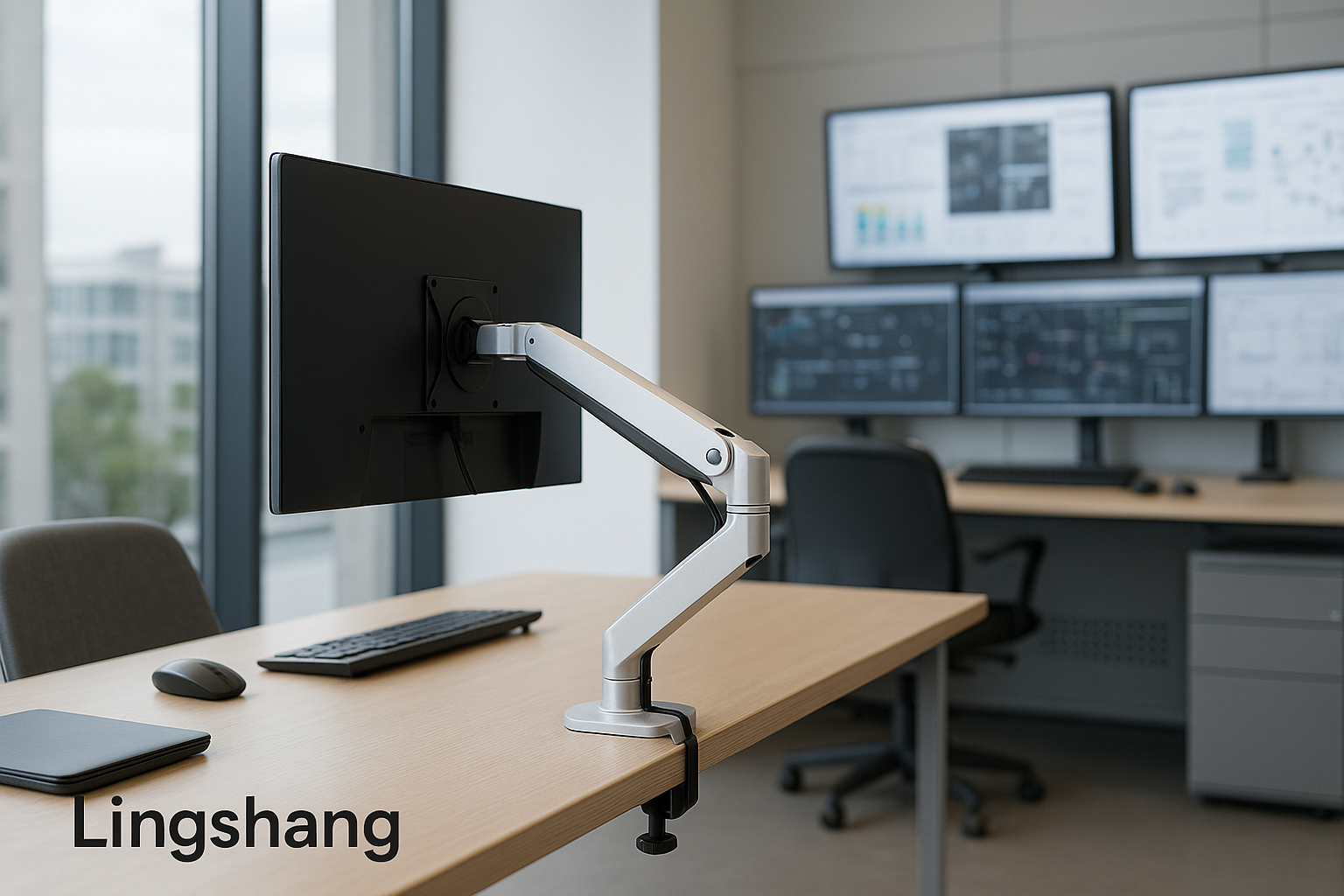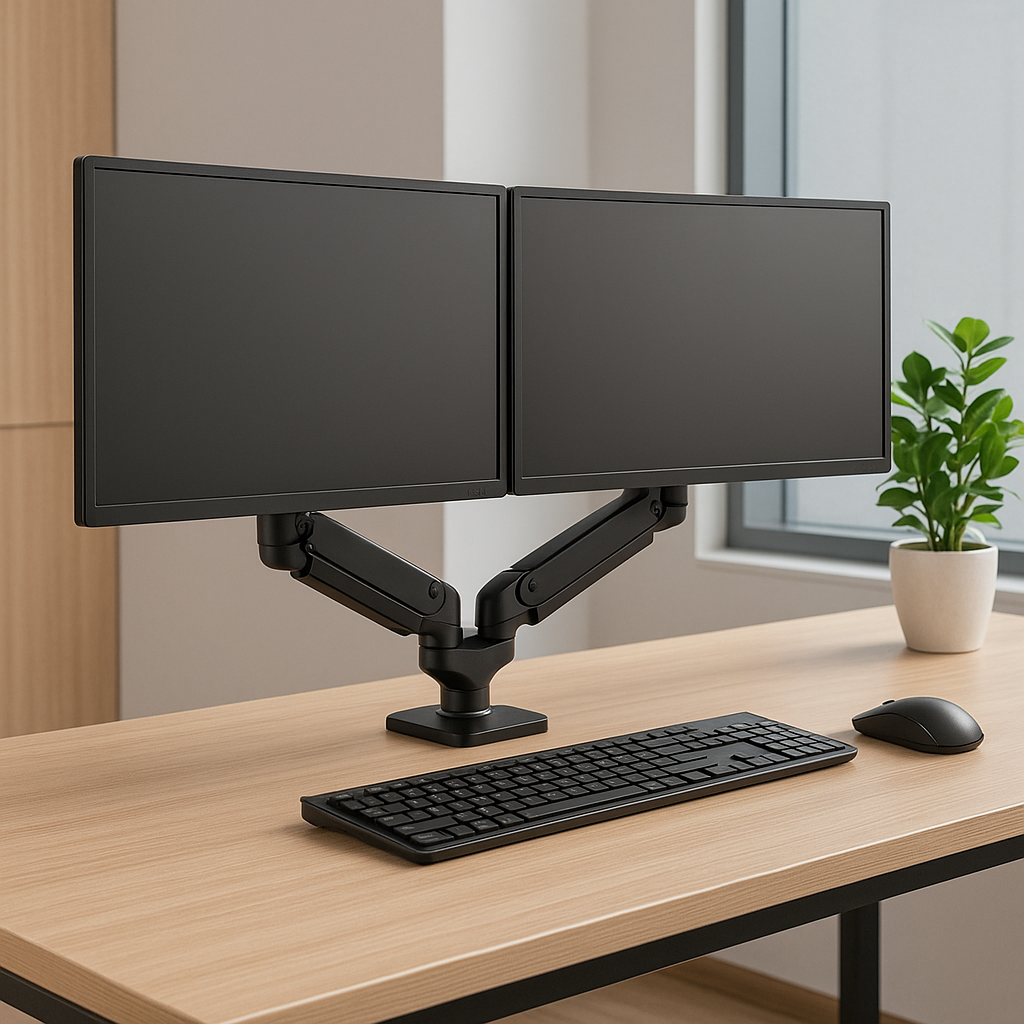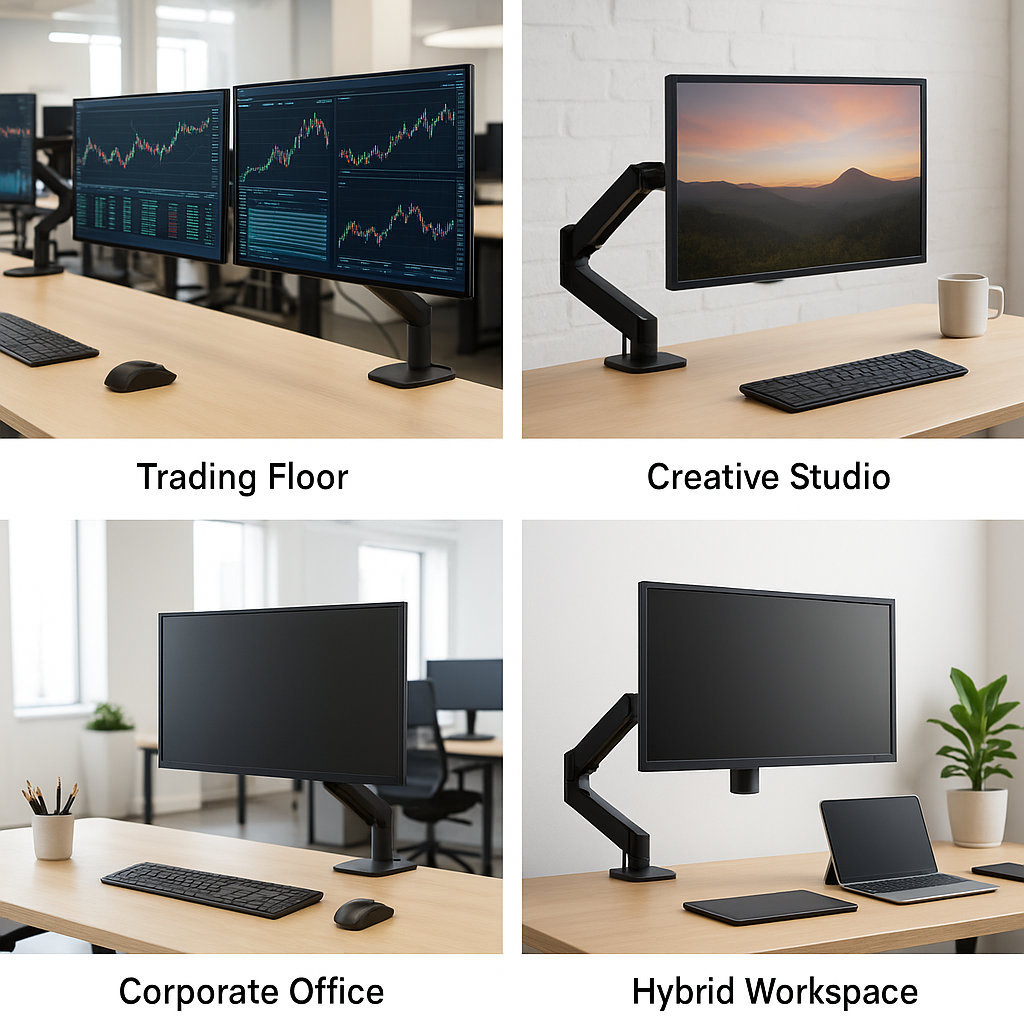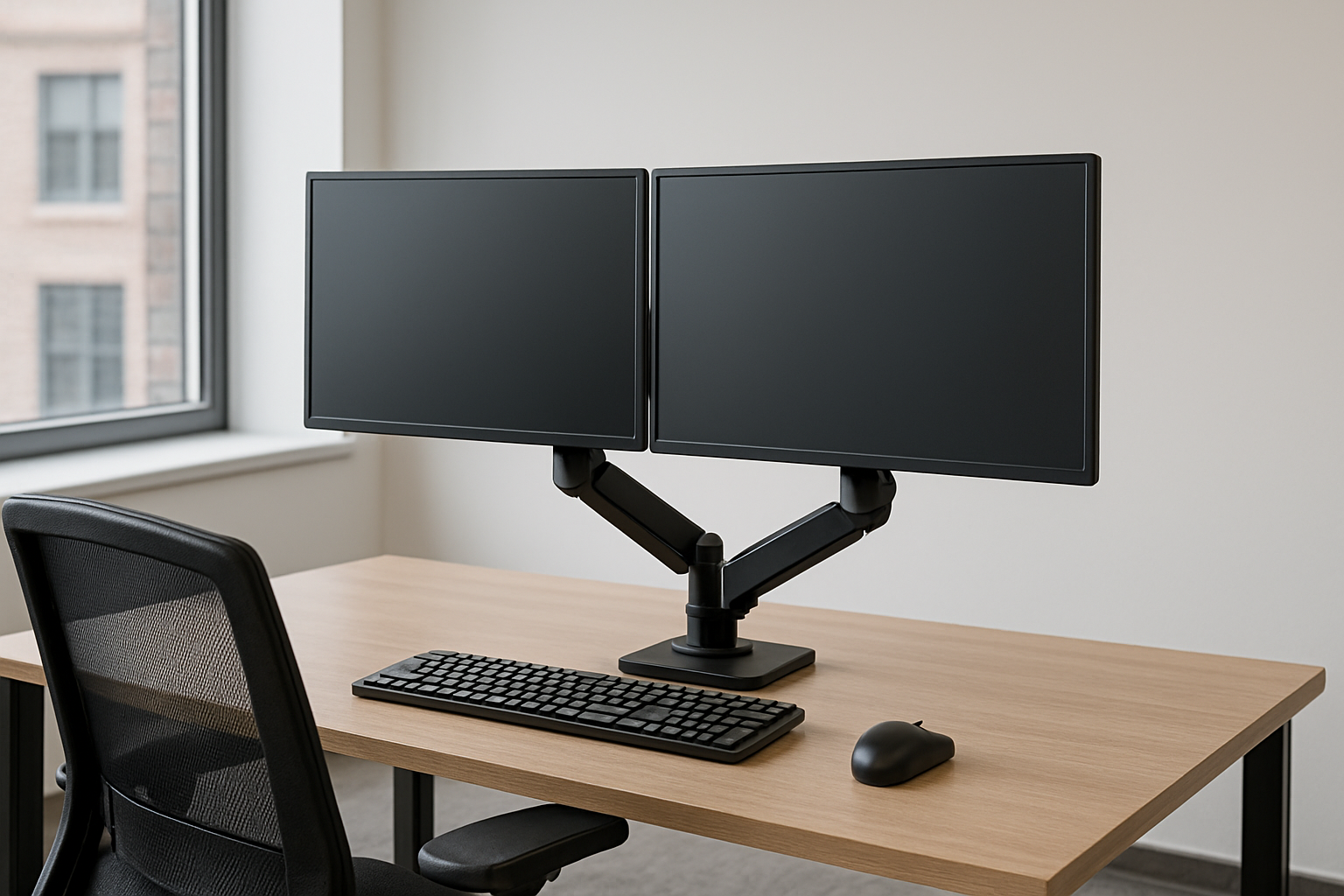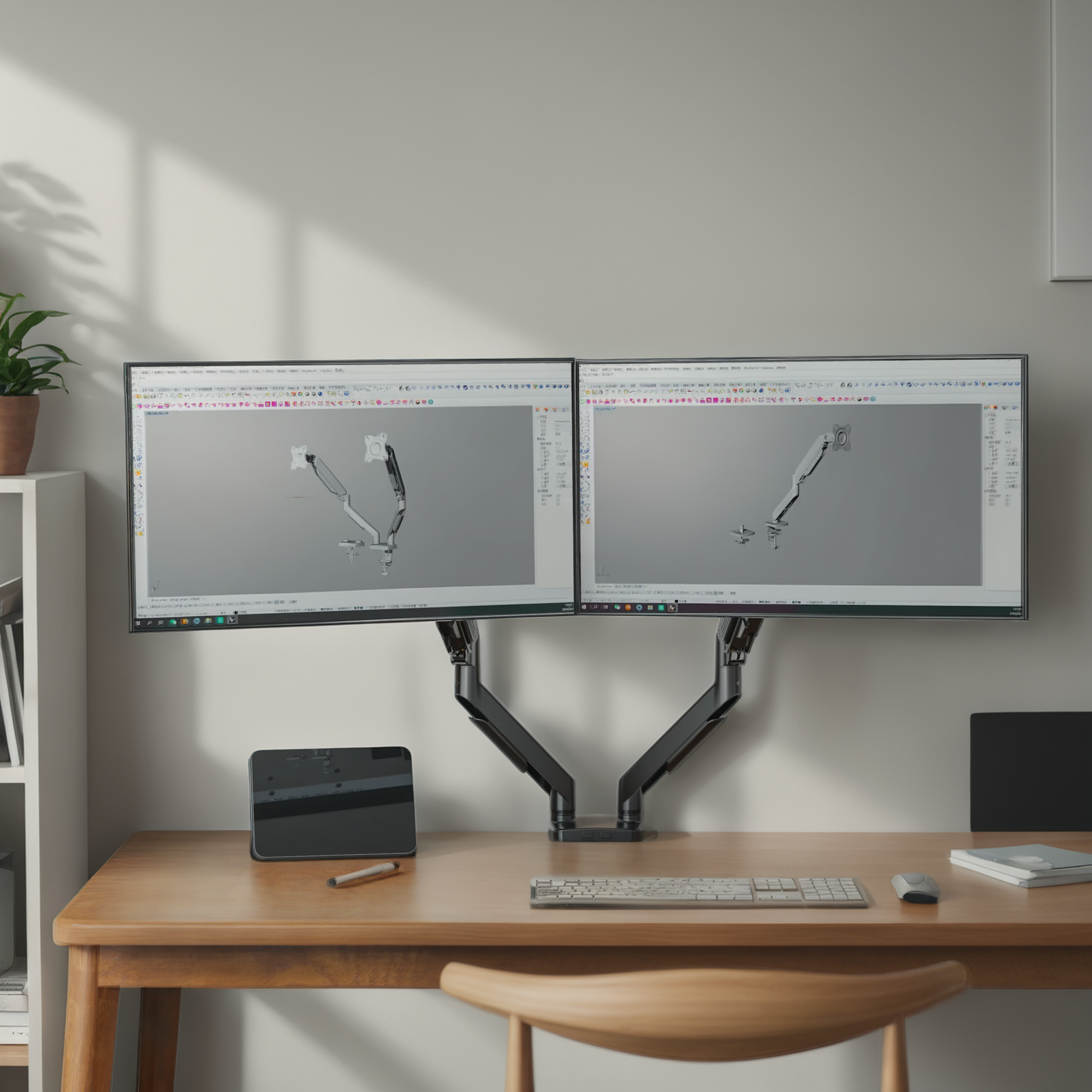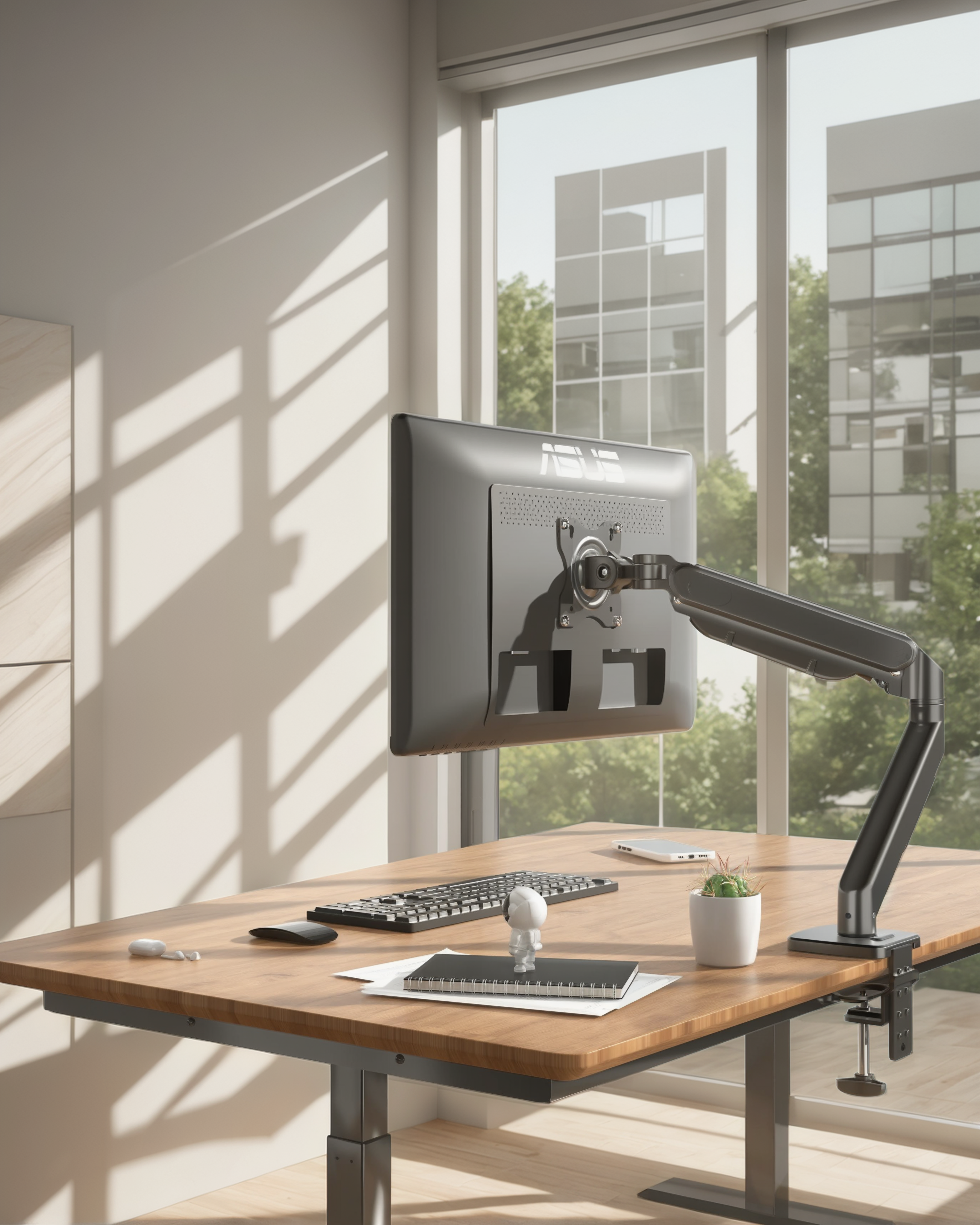
Why You Shouldn’t Rely on Default Monitor Stands
Monitor stands that come with your screen seem fine—until they’re not. Most users assume that a screen “as is” must be correct, but that’s where subtle damage begins.
Over time, these poorly positioned screens lead toforward head posture,strained necks,compressed shoulders, andunproductive desk habits—especially among office workers, students, and creatives who stare at screens for hours.
The Hidden Cost of Passive Workspaces
In today’s digital-first world, we spend more time than ever in front of screens—whether for work, school, or personal projects. But while the software and devices have evolved, many physical workspaces remain static and outdated.
One major oversight?Monitor height and position.
Default monitor stands typically lock the screen into a fixed posture, often forcing users intoawkward angles. Over time, this can lead to:
-
Forward head posture
-
Shoulder tension
-
Compensatory leaning that reduces core engagement
According to the Journal of Ergonomics, over 60% of office workers report discomfort linked to improper screen alignment, with symptoms ranging from eye fatigue to neck strain.
Without the ability to adjust your monitor to your natural line of sight, even short sessions at your desk can create long-term health issues. It's not about luxury—it’s about adapting your space to how your body actually works.
What Built-In Stands Get Wrong
1. Wrong height for most people
Factory stands often lock screens too low, encouraging users to crane their necks downward.
According to a study from the National Institutes of Health, downward gaze angles of just 15°–20° can double the load on neck muscles, contributing to fatigue and long-term cervical issues.
2. No flexibility
They don’t support rotation, tilt, or vertical height—even small daily posture differenceslead to strain.
3. Cluttered desk space
These stands take up valuable surface area, reducing keyboard clearance and mouse range—especially frustrating forsmall desks or dual-monitor users.
Adjusting for Real Life: Tips from Professionals
Whether you’re working, studying, gaming, or designing,the monitor should adjust to your posture—not the other way around.
For desk workers
If you spend 6–8 hours seated, your screen should sitat eye level, about50–70cmfrom your eyes. Use a monitor mount to make micro-adjustments as your position shifts throughout the day.
For students
Studying for hours on a fixed screen leads to hunched backs and tension. With a mount, students canquickly shift between reading posture and typing posture, maintaining healthy neck alignment.
For creatives
Designers and editors often need totilt or rotate screensdepending on tasks. Built-in stands don’t support this, but monitor arms offer dynamic movement and better collaboration positioning.
What the Experts Say
A review in the Journal of Occupational Rehabilitation emphasized that ergonomic screen placement is a critical factor in preventing work-related musculoskeletal disorders, particularly for those with over 3 hours of daily screen time.
It’s not just about comfort—it’s about preventing long-term injury.
A Healthier Setup in Minutes
You don’t need to overhaul your desk. Simply replacing your static stand with amonitor mount from lingshangcan offer:
-
Screen height that matches your posture
-
Flexibility for seated, standing, or shared setups
-
More usable desk space
-
Long-term spinal support
It’s asmall investment for big daily comfort—especially if your work, study, or entertainment depends on screens.
Don’t Let “Good Enough” Ruin Your Setup
Default stands are built for manufacturing convenience, not your body. If your neck feels tight, your shoulders are curled, or you find yourself shifting in your seat—it’s time for an upgrade.
Explore ergonomic workspace tools on ourhomepage.
Need help finding the right configuration? Reach out via ourContact Us pageto get personalized advice from our team.

